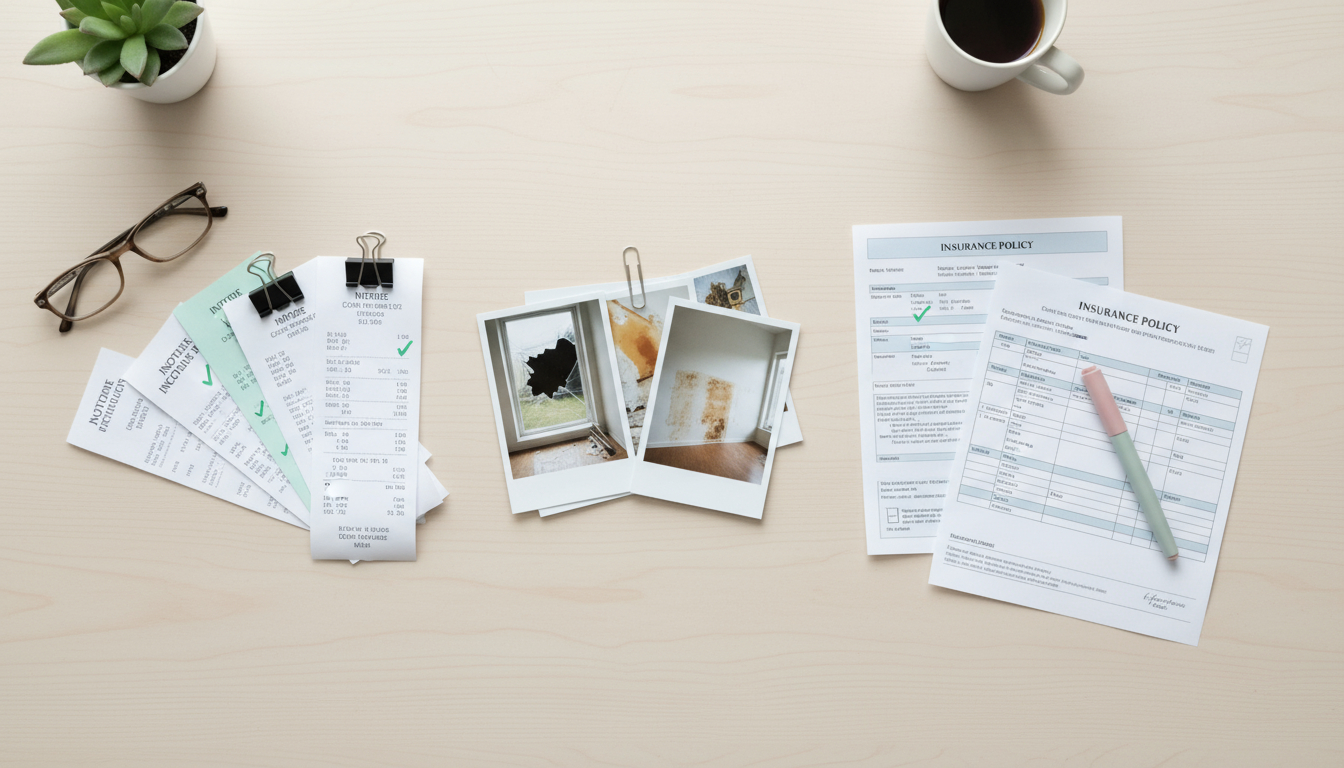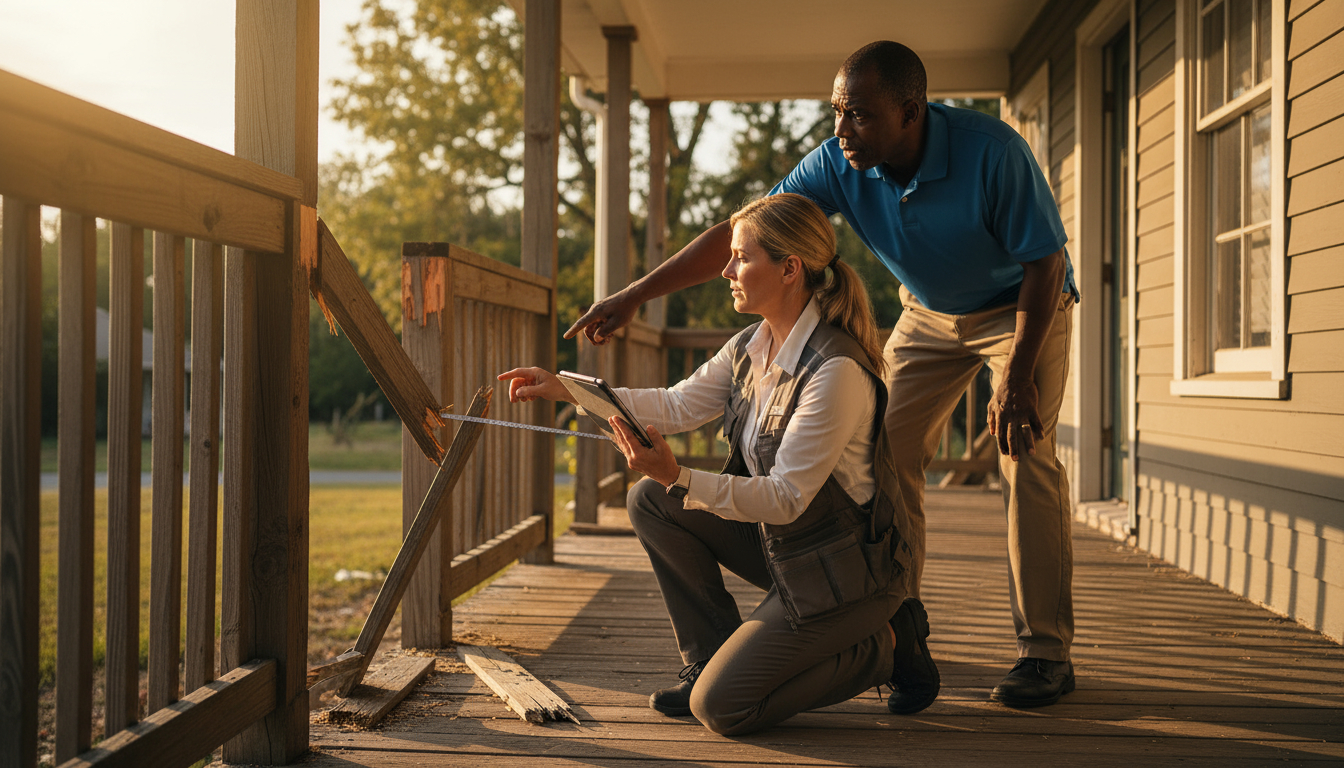What Is the Insurance Claims Process?
The insurance claims process is a structured procedure through which policyholders request compensation for covered property losses. This framework involves multiple parties including the policyholder, insurance company, adjusters, and often restoration contractors. Each party has specific roles and responsibilities that, when properly understood, create a smooth path to fair settlement.
Understanding this system begins with recognizing it as a contractual agreement. Your policy outlines specific coverages, exclusions, and procedures both you and your insurer must follow. The relationship balances the insurer’s need to verify legitimate losses with your right to prompt, fair compensation for covered damages.
Modern claim handling has evolved to include digital documentation, virtual inspections, and expedited payments for straightforward losses. However, complex damage still requires traditional investigation methods, multiple inspections, and detailed documentation throughout the resolution.
How the Insurance Claims Process Works
Property damage claims follow a predictable sequence of steps, though timelines vary based on damage severity and complexity. Understanding each phase helps you prepare appropriately and avoid delays.
Step 1: Damage Discovery and Emergency Response
The process begins the moment you discover property damage. Your first priority is safety and preventing further damage. Most policies require “reasonable steps” to mitigate additional losses, making emergency tarping, water extraction, or temporary repairs essential. Document these emergency measures as they’re typically reimbursable.
Step 2: Initial Claim Filing
Contact your insurance company immediately to start the formal procedure. Most insurers have 24-hour claim hotlines. During this initial call, you’ll provide basic information about the damage, receive a claim number, and learn about your policy’s specific requirements. The representative will explain immediate next steps and timeline expectations.
Step 3: Documentation and Evidence Gathering
Thorough documentation forms the foundation of successful claims. Photograph all damage from multiple angles, create detailed inventories of damaged property, and gather receipts for emergency repairs. Extensive proof of loss makes comprehensive documentation essential for fair settlement.
Step 4: Adjuster Assignment and Inspection
Your insurer assigns an adjuster to evaluate your claim, marking a critical phase. Adjusters inspect damage, review documentation, and determine coverage applicability. Prepare for this inspection by organizing all documentation and creating a damage list to ensure nothing is overlooked during this crucial step.
Step 5: Estimate Review and Settlement
After inspection, the adjuster prepares a damage estimate and settlement recommendation. This phase often involves negotiation, particularly for significant losses. Understanding how adjusters calculate losses and having contractor estimates helps ensure fair compensation.

Types of Property Damage Coverage
Different types of property damage require different approaches when filing claims. Understanding your coverage types helps set realistic expectations for resolution.
Dwelling Coverage
This covers your home’s structure including walls, roof, foundation, and built-in appliances. Dwelling damage claims typically involve detailed structural assessment and may require multiple contractor bids. Understanding replacement cost versus actual cash value impacts your settlement amount.
Personal Property Coverage
Contents coverage protects belongings inside your property. Personal property claims require detailed inventories with item descriptions, ages, and values. Many policies limit coverage for certain items like jewelry or electronics, affecting these specific losses.
Additional Living Expenses
When damage makes your home uninhabitable, ALE coverage pays for temporary housing and increased living costs. These claims require careful expense tracking and documentation of additional costs above normal living expenses.
| Coverage Type | What It Covers | Common Limits | Documentation Needed |
|---|---|---|---|
| Dwelling | Structure and attached fixtures | Policy limit amount | Photos, contractor estimates |
| Personal Property | Belongings and contents | 50-70% of dwelling limit | Inventories, receipts, photos |
| ALE | Temporary living costs | 20-30% of dwelling limit | Receipts, rental agreements |
| Other Structures | Detached buildings | 10% of dwelling limit | Photos, measurements |
⚠️ Important: Review your policy’s specific coverage limits and exclusions before beginning the insurance claims process to avoid surprises.
Critical Documentation for Property Damage Claims
Success depends heavily on documentation quality. Comprehensive evidence supports your claim and expedites resolution.
Photographic Evidence
Take extensive photos, including before cleanup begins. Capture overview shots showing damage extent, detailed close-ups of specific damage, and comparison photos of undamaged areas. Date-stamp all photos and organize them logically for easy reference during review.
Written Documentation
Create detailed written records throughout your claim. Document all conversations with insurance representatives, including dates, names, and discussion content. Keep a damage diary noting discovery times, progression, and mitigation efforts. Written documentation provides crucial support if disputes arise.
Financial Records
Gather all financial documentation relevant to your losses. This includes receipts for damaged items, emergency repair invoices, temporary housing costs, and contractor estimates. Organize financial documents chronologically to streamline review.
💡 Pro Tip: Create digital backups of all documentation related to your claim. Cloud storage ensures you won’t lose critical evidence if originals are damaged.
Working with Insurance Adjusters
The adjuster relationship significantly impacts your insurance claims process experience and outcome. Understanding adjuster roles and motivations helps navigate this critical relationship.
Types of Adjusters
Three adjuster types may be involved in your insurance claims process. Company adjusters work directly for your insurer. Independent adjusters are contractors hired by insurance companies. Public adjusters work for policyholders, typically taking a percentage of the settlement. Each brings different perspectives to the insurance claims process.
Preparing for Adjuster Visits
Maximize adjuster inspections by preparing thoroughly. Have all documentation organized, create a comprehensive damage list, and be present during inspection to ensure nothing is missed. Ask questions about the insurance claims process and take notes on the adjuster’s observations and comments.
Negotiating Fair Settlements
Negotiations often occur, particularly for significant losses. Obtain independent contractor estimates to compare with adjuster assessments. Understand your policy’s coverage details and be prepared to justify your damage valuations with documentation throughout negotiations.

Common Problems During Property Damage Claims
Understanding potential obstacles helps you navigate claims more effectively. Anticipating challenges allows proactive solutions that keep your claim moving forward.
Delays and Slow Response
Claims can bog down due to adjuster backlogs, incomplete documentation, or complex damage requiring multiple inspections. Combat delays by responding promptly to information requests, maintaining regular contact with your adjuster, and documenting all interactions.
Coverage Disputes
Disagreements about coverage applicability complicate resolution. Common disputes involve determining whether damage resulted from covered or excluded perils, arguing about pre-existing damage, or debating policy interpretation. Clear documentation and professional assessments help resolve coverage disputes.
Undervalued Settlements
Initial settlement offers may undervalue your losses. Adjusters might use depreciation aggressively, overlook hidden damage, or underestimate repair costs. Counter low offers with detailed documentation, contractor estimates, and thorough justification for your valuation during negotiations.
| Common Issue | Cause | Solution | Prevention |
|---|---|---|---|
| Claim Delays | Missing documentation | Provide requested items promptly | Organize documents from start |
| Coverage Denial | Policy exclusions | Appeal with supporting evidence | Understand policy before claims |
| Low Settlement | Inadequate documentation | Provide additional evidence | Comprehensive initial documentation |
| Communication Issues | Multiple parties involved | Designate single point of contact | Establish communication protocol |
🏠 Home Tip: Keep a dedicated file for all claim documentation, including photos, receipts, and correspondence. Organization speeds resolution.
Timeline Expectations for Property Damage Claims
While every claim differs, understanding typical timelines helps set realistic expectations for your journey.
Initial Response Times
Most states require insurers to acknowledge claims within 24-48 hours and begin investigation within 15 days. Typically, you’ll see adjuster contact within 1-3 days for emergency situations and 5-7 days for non-emergency claims.
Investigation and Settlement
The investigation phase usually takes 15-30 days for straightforward claims. Complex losses involving multiple contractors or coverage questions may extend resolution to 60-90 days. Most states require claim decisions within 30-60 days of filing.
Payment Processing
Once settlement is reached, payment typically arrives within 5-10 business days. Some insurers issue immediate partial payments for emergency repairs while the full review continues. Mortgage involvement may delay payment as lenders often must endorse insurance checks.
Investment Considerations in Property Damage Claims
Understanding financial aspects helps you make informed decisions about repairs and settlements.
Deductibles and Out-of-Pocket Expenses
Your deductible represents your share of the loss. Some policies have percentage deductibles for certain perils like hurricanes or earthquakes. Understanding deductible application helps budget for out-of-pocket expenses during restoration.
Replacement Cost vs. Actual Cash Value
This distinction significantly impacts settlements. Replacement cost coverage pays to replace damaged items with new equivalents. Actual cash value deducts depreciation, reducing payouts. Understanding your coverage type helps set accurate expectations for compensation.
Recoverable Depreciation
With replacement cost coverage, insurers often withhold depreciation initially. You recover this amount after completing repairs and providing proof. This two-step payment method affects cash flow during restoration.
Frequently Asked Questions About the Insurance Claims Process
How long do I have to file a claim after discovering damage?
Most policies require “prompt” notification, typically interpreted as within 30-60 days of discovery. However, filing immediately starts the insurance claims process faster and prevents coverage disputes. Document why any delays occurred if you cannot file immediately.
Can I use my own contractor instead of the insurance company’s preferred vendor?
Yes, you can choose your own contractor for repairs during the insurance claims process. While insurers may recommend preferred vendors, you’re not obligated to use them. However, ensure your contractor’s estimate aligns with the insurance settlement to avoid out-of-pocket costs.
What if my claim is denied during the insurance claims process?
First, request a detailed written explanation for the denial. Review your policy to verify the decision’s accuracy. If you disagree, file an appeal with additional documentation. Many states offer insurance mediation programs, and you can file complaints with state insurance departments.
Should I accept the first settlement offer in the insurance claims process?
Review initial offers carefully before accepting. Compare the settlement to independent contractor estimates and ensure all damage is included. You can negotiate if the offer seems low, providing documentation to support your position in the insurance claims process.
How often should I follow up during the insurance claims process?
Weekly follow-up is reasonable for active claims. Document all communications and escalate to supervisors if responses are delayed. Most states have regulations requiring insurers to respond within specific timeframes during the insurance claims process.
What happens if I discover additional damage after settling?
You can file supplemental claims for newly discovered damage related to the original incident. Document why the damage wasn’t initially visible and provide evidence linking it to the covered loss. The insurance claims process allows reopening claims for related damage.
Mastering Your Property Damage Claim
Successfully navigating the insurance claims process requires preparation, documentation, and persistence. Understanding each step, from initial damage discovery through final settlement, empowers you to advocate effectively for fair compensation. While the procedure may seem daunting, knowledge of your rights and responsibilities levels the playing field with insurance companies.
Remember that property damage claims are designed to restore you to pre-loss condition. Don’t accept inadequate settlements or allow complexity to intimidate you into accepting less than you deserve. With proper documentation, professional support, and understanding of claim procedures, you can achieve fair resolution of your property damage.
Professional restoration companies play a crucial role in property damage claims. Emergency response teams provide immediate mitigation while documenting damage for your claim. Experienced residential restoration services and commercial restoration teams understand claim procedures and provide detailed documentation supporting your case.
For complex losses, professional assistance streamlines the entire process. Contact restoration professionals who work directly with insurance companies, providing accurate damage assessments and comprehensive documentation. With offices throughout our service regions, expert help navigating property damage claims is always available. Don’t face complex claims alone – professional support ensures you receive every dollar you’re entitled to for restoring your property.

